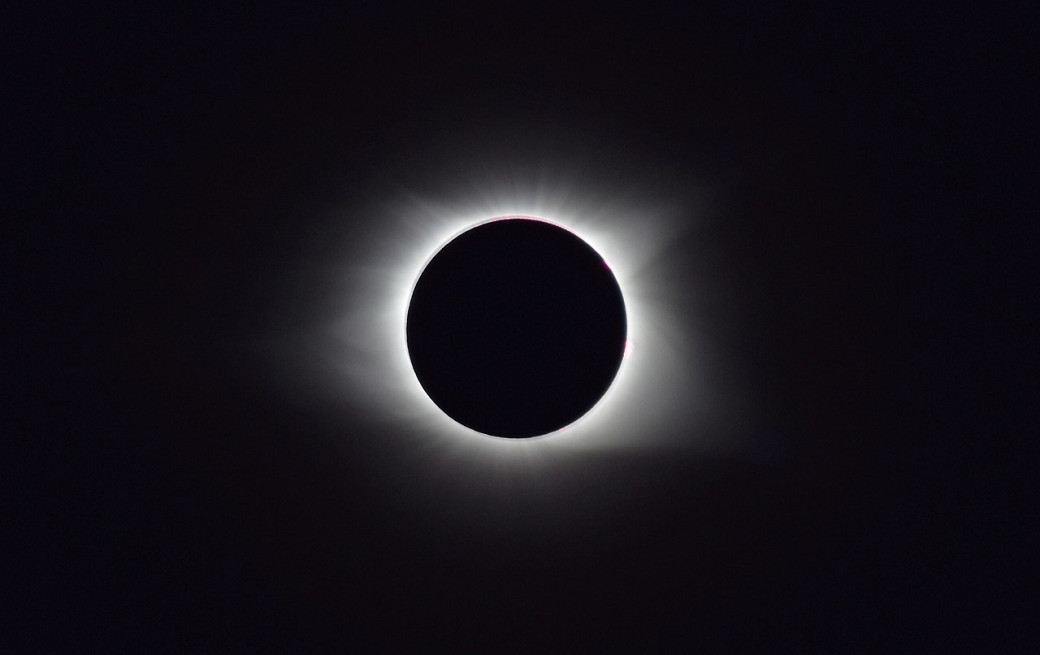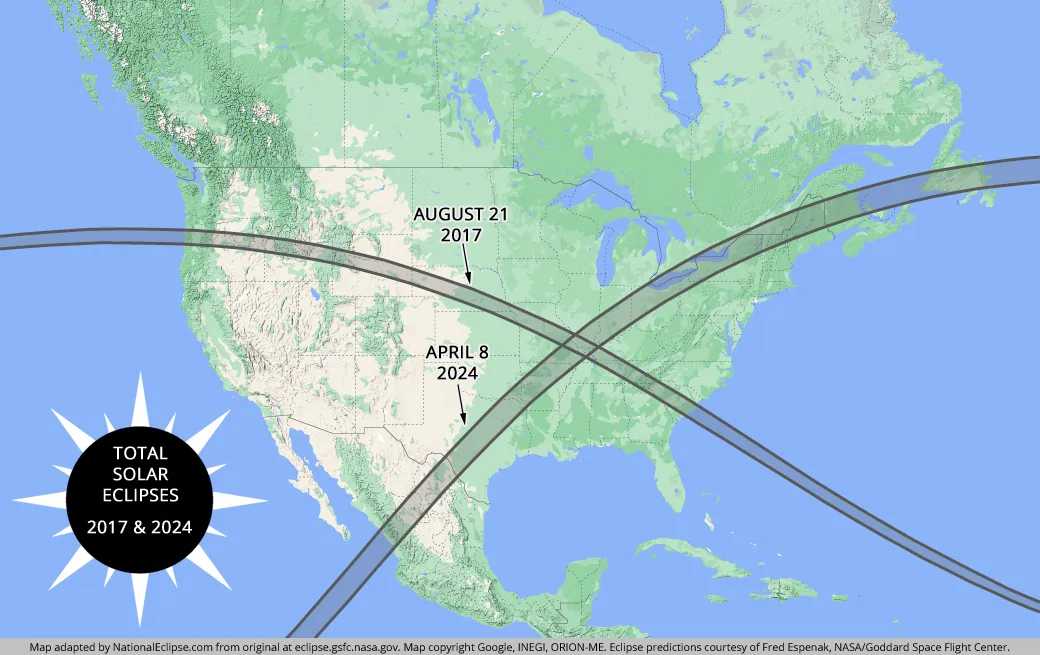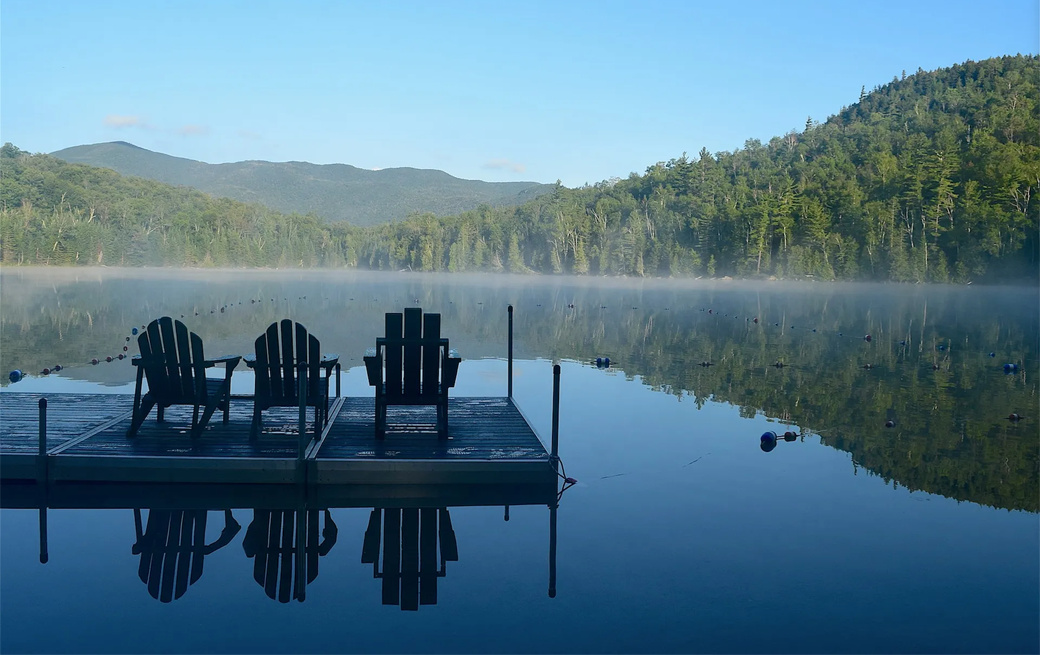NationalEclipse.com | Apr 5, 2021 | National Eclipse Blog

In just a few days, the total solar eclipse of April 8, 2024, will be exactly three years away. That's still a long time, but that day suddenly now seems within reach. Those who saw the historic 2017 total solar eclipse in America knew they would have to endure an agonizing seven-year wait for totality to return to the United States. But now, with only three years to go, we're more than halfway to the finish line.
If you thought the 2017 eclipse was something special, get ready for a real treat in 2024. With eclipse fever once again heating up, it seems like a good time to highlight some of the reasons why the 2024 eclipse shouldn't be missed. And why 2024 promises to be even more spectacular than 2017.
Reason #1 — The Path of Totality Crosses Over More Major Cities
The 2017 path of totality—the narrow strip of land within which a total solar eclipse is "total"—crossed the United States from west to east, starting in Oregon and ending in South Carolina. Although it did cross over several major cities, including Kansas City, St. Louis, Nashville, and Charleston, much of the cross-country path consisted of inaccessible wilderness in the American West, sparsely populated prairies in the Great Plains, and remote mountain areas in the East. Still, millions of Americans and visitors from around the world found a suitable viewing site.
The 2024 eclipse isn't a coast-to-coast event. But that's a good thing. Instead of crossing over all of that difficult-to-access terrain across the width of the country, the 2024 path of totality races from southwest to northeast, entering the country in Texas and exiting in Maine. In the process, it crosses a plethora of major American cities and population centers in Texas and up through the "Rust Belt" of America.

Along its roughly 2,000-mile trek across the country, the 2024 path of totality crosses over San Antonio, Austin, Dallas, Indianapolis, Cleveland, Buffalo, and many other large northern cities and state capitals. At the same time, the path also comes tantalizingly close to a profusion of other major cities from which the path can easily be reached by car—Houston, Oklahoma City, Memphis, St. Louis, Louisville, Cincinnati, Columbus, Detroit, Pittsburgh.
The fact that the 2024 eclipse crosses over or comes close to more major cities than in 2017 means that more people than ever will have a chance to experience nature's greatest show. The eclipse will happen, literally, in the backyards of millions of Americans. And millions more who live outside the path of totality can easily drive into it on eclipse day or take advantage of the wealth of lodging options offered by the cities located inside the totality zone. On April 8, 2024, this eclipse will supplant the 2017 eclipse as the most widely viewed in human history.
Reason #2 — The Duration of Totality is Almost Two Minutes Longer
For a total solar eclipse, the "duration of totality" is the amount of time during which the Sun is totally eclipsed by the Moon. This total phase can only happen inside the narrow path of totality, with the longest durations occurring along the centerline of the path. In addition, along every eclipse path centerline is a single "point of greatest duration" where the duration of totality is longer than anywhere else along the path for that eclipse. Simply put, totality is the main attraction during a total solar eclipse, and the duration of totality dictates for how long you'll enjoy the show.

In 2017, the point of greatest duration was located in Southern Illinois. At that singular spot along the centerline, the Sun went dark for exactly 2 minutes and 40 seconds. In terms of duration, this was considered an average total solar eclipse. As opposed to an eclipse measured in mere seconds, it offered enough time for spectators to observe totality in detail, but it didn't come anywhere close to the theoretical maximum duration of totality for a total solar eclipse on Earth: 7 minutes and 30 seconds.
It's a far different story in 2024. On April 8, the longest duration of totality will clock in at a whopping 4 minutes and 28 seconds—almost two minutes longer than in 2017! This time, the point of greatest duration will be located in Mexico. But even hundreds of miles north of the border, the duration of totality along the centerline will only be a few seconds short of the eclipse maximum in Mexico. Therefore, if you want the longest durations of totality in the U.S., Texas is the place to be, with the duration gradually decreasing along the centerline as the path travels up through the nation. By the time the path enters Maine, the duration of totality will have decreased to about 3 minutes and 28 seconds on the centerline. But even in Maine, totality will last almost a minute longer than anywhere in 2017.
A four-minute eclipse is special. They don't happen often. In fact, the 2024 eclipse marks the first time a four-minute eclipse will occur over what constitutes the present-day contiguous U.S. since 1806. And this time, by sheer luck, it happens along a path of totality that's easily accessible by millions of Americans.
Reason #3 — The Fear of Missing Out
If the 2017 total solar eclipse was the most widely viewed eclipse in human history, the 2024 eclipse will be the most anticipated. After experiencing the shock and awe of a total solar eclipse for the first time in 2017, millions of Americans declared their intention to see another one. And they told their friends and families about it. If cities and towns along the path of totality were packed in 2017, they'll be absolutely bursting in 2024.
This is the third reason why the 2024 eclipse will outshine the 2017 eclipse. People will not want to miss it. This time around, the eclipse won't be considered a novelty, an interesting event that might be worth checking out. After you've seen a total solar eclipse, you must see another one. And you'll encourage everyone you know to see one too. The buzz and hype preceding this eclipse will be unprecedented. What's more, this will be the last total solar eclipse visible from the lower 48 states for 20 years. If you missed the 2017 eclipse, you knew there would be another opportunity in seven short years. If you don't see the 2024 eclipse, you're out of luck in America until 2044.
Any veteran eclipse chaser will tell you that part of the fun is in the excitement that surrounds an upcoming eclipse. In the days leading up to a total solar eclipse, there's a festival atmosphere all along the path of totality. In small towns and large cities, eclipse-related events and activities are planned for both locals and visitors. On eclipse day itself, viewing parties of all shapes and sizes pop up all over the place—at science museums, in town squares, at wineries and breweries, during sporting events, even on boats and planes...
The 2024 eclipse already promises to be extra special. With a path of totality that crosses over or comes close to more major cities and with a maximum duration of totality that's almost two minutes longer than in 2017, it will be the must-see attraction of the year. When you combine that with the FOMO factor and the influx of eclipse tourists it will generate and all of the hoopla they will bring with them, the 2024 eclipse will be a celebration for the ages.
And Now for Some Bad News...
In most ways, the 2024 eclipse will surpass the 2017 experience. But there's one aspect of the 2024 event that falls short by comparison. In 2017, the eclipse occurred on August 21, in the middle of summer. Setting aside the potential threat of summertime storms, the weather was warm, people were enjoying summer vacations, and the risk of weather-related travel delays were minimal.
The 2024 eclipse occurs in April—and in the beginning of the month to boot. If a spring thaw doesn't come early, many northern cities may still be experiencing chilly temperatures on April 8 and snow is still a possibility. The 2024 eclipse traces a path that takes it across Lake Erie and Lake Ontario. Under ideal conditions, these lakes would be the perfect place for an eclipse viewing, either on or off the water. In early April, however, both air and water temperatures will be frigid. In New York, the Adirondack Mountains promise to be one of the most scenic places to see an eclipse, but the weather in early April is unpredictable in this part of the country. Many of the beautiful mountain lakes might still be frozen on April 8.

The wise eclipse chaser knows how important it is to monitor short-term weather reports in the days leading up to an eclipse. Even a single stray cloud can spoil years of planning. For the 2024 eclipse, this vigilance is even more critical, especially in the North. Keep close tabs on weather forecasts for your planned viewing location and remain mobile if you can. In 2017, many people found clear skies just a short drive away from their original clouded-out locations.
But on the Bright Side...
The potential for bad or unpleasant weather notwithstanding, the nature of the 2024 eclipse all but guarantees that it will, well, eclipse the excitement and majesty of the 2017 eclipse. It will be the longest total solar eclipse in America in over 200 years. It will be seen by more people and attract more attention than any total solar eclipse in world history. Already, excitement is building. All along the path of totality, cities and towns are starting to get ready. All over the world, people are starting to make travel plans, or at least thinking about them. It's never too early to start planning for a total solar eclipse, especially one as monumental as this. Take a moment, right now, to mark your calendar for April 8, 2024. You'll be glad you did.